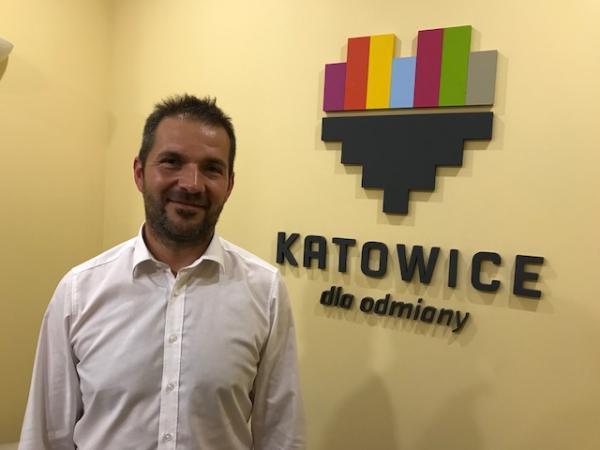The Katowice cultural regeneration transforms a Polish coal district into a zone for symphonies, conferences and museums
Find out how Katowice became a destination for music, culture and sport:
- Katowice’s “cultural quarter,” built on the area of an old coal mine, now contains a concert hall, conference center, sports arena and museum
- Katowice is now a UNESCO “City of Music”
- The city’s International Conference Center, with a capacity for 12,000 visitors, will host the COP 24 climate conference in December 201
Subscribe to Future Europe on iTunes, Spotify and Acast.
Future Europe features a podcast episode from each of the EU’s 28 Member States. Each episode tells the story of a project that illuminates the way Europeans will live in the future. All the stories are told through the voices of people involved in the projects.

Katowice cultural regeneration fights old image
Marcin Stanczyk’s office overlooks Katowice’s main square, which is lined with huge posters for an upcoming musical festival. Trams rumble past busy cafes where people alongside the paved walkways. Stanczyk has been in a prime position to view the changes to the surrounding area as head of the promotional department for Katowice’s City Hall.
“We had to fight the traditional bad image of this city as a center of coal and steel,” Stanczyk says. “We decided that we were going to create something that showed how we could become a city of modern services, a city of culture and a city of very friendly spaces.”
Katowice, a city of 300,000 people in southern Poland, was once a gritty industrial city center that lived off the seams of coal buried deep below its surface.
The closure of the mines and associated steel works in the 1980s and 1990s marked a turbulent turn for the city. It may have been good for the environment, but it also spelt potentially bad news for the local economy.
The City Council decided to embark on a widescale urban redevelopment, transforming Katowice into an international conference venue and a center for culture. To many, “this seemed like something unbelievable” says Stancyzk.
Now, where a coal mine once stood, there is a “cultural zone,” with a new conference center, museum and concert hall alongside a refurbished sports arena.
Culture zone for Katowice
The European Investment Bank’s million loan to Katowice has assisted in four key areas:
- construction of an international conference center with a capacity for over 12,000 people
- design and building of a concert hall for Poland’s Radio Symphony Orchestra
- refurbishment of the 47-year-old Spodek sports arena, with new seating and exterior
- building new infrastructure, such as roads, utilities, and pedestrian access, to connect the new venues in the Culture Zone.
Undertaking such a transformative project was complicated and expensive. The EIB lent Katowice City Council €65 million.
The fruits of the council’s efforts and the EIB’s investment are—literally—music to the ears of many people.
The new concert hall, which has space for 1,800 people, is home to the Polish Radio National Symphony Orchestra. The hall sits in the middle of the culture zone. Its exterior is made with local traditional red bricks, while the interior has a large black wall, redolent of a seam of coal that still sits hundreds of meters under the ground.
Sebastian Gronet, the head of public relations at the concert hall, says the new venue is a great addition for the city, and for all music lovers.
“This is a big change not just for the audience but also for the performers,” Gronet says. “When the musicians were here for the first time, they were joking with their colleagues, whom they had sat next to for years, that ‘Now at last I can hear if you’re playing well or not playing well’.”
Katowice cultural regeneration brings new life
Alongside the new venues, Katowice has begun to develop new life for people in the city. There are summer festivals with DJs and food trucks, as well as a range of music from clubs across the city.
There’s also an underground museum built at the entrance to an old mine. It tells the story of Katowice from its origins as a village, through its history as an industrial center and transformation to a cultural hub.
Marcin Futera is a loan officer for the EIB in Poland. He’s very proud of what the Bank has help achieve,
“We support projects that are not always easy,” he says, “but that are important for the local society, that improve people’s lives.”
